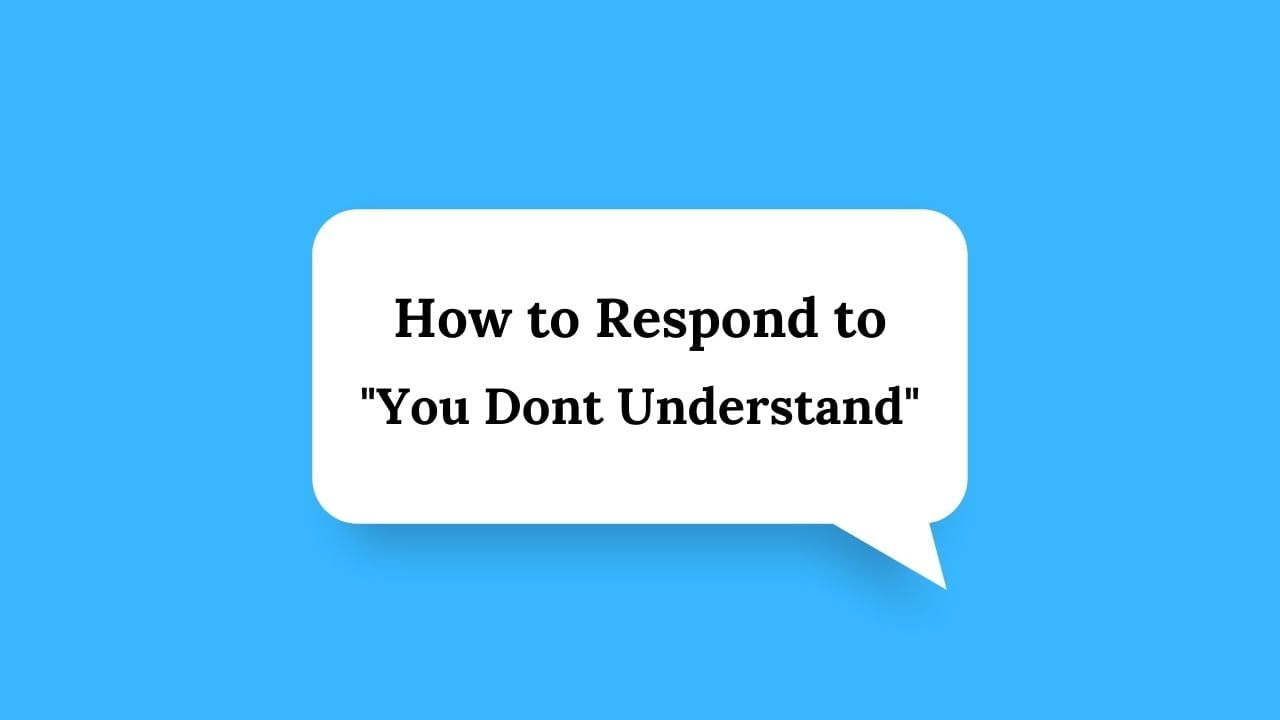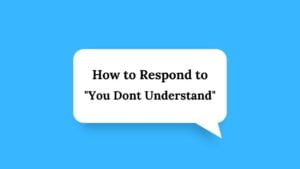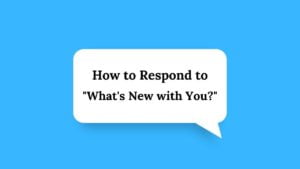Texting has become an integral part of our daily communication, and occasionally, you might come across a text saying, ‘You Don’t Understand.’ Whether it’s a heated argument, a casual chat, or a deep conversation, responding to this statement can be a bit tricky.
This blog post will guide you through various creative and thoughtful ways to respond, helping you navigate this sensitive interaction with ease.
What does it mean when someone says ‘You Don’t Understand’ in a text?
When someone texts ‘You Don’t Understand,’ it usually implies one or more of the following:
Frustration
The person might be struggling to express their feelings or thoughts and feels that you’re not fully grasping their point of view.
Complexity
The issue at hand might be complex or personal, making it hard for them to believe that others can truly understand their situation.
Emotional Distance
They may feel emotionally misunderstood or isolated.
Desire for Empathy
They might not be looking for solutions, but empathy and acknowledgment of their feelings.
25 Best Responses to ‘You Don’t Understand’ Text
Taking into account the above, here are 25 considerate and empathetic responses to ‘You Don’t Understand’:
“I’m sorry if it seems that way. I’m trying my best to understand your perspective. Can you help me understand better?”
This shows your willingness to understand their point of view.
“I may not fully understand your experience, but I’m here for you. Would you like to talk more about it?”
This shows empathy and willingness to support them.
“I appreciate your patience. Please explain it to me again, I really want to understand.”
Showing gratitude and eagerness to understand can help ease their frustration.
“I’m sorry if I missed something. Could you share more about how you’re feeling?”
This response validates their feelings and opens the door for them to express themselves more fully.
“I can see that this is really important to you. Let’s take the time to go through it again.”
Acknowledging the importance of the matter to them can make them feel heard and valued.
“I realize I may not understand your experience fully. But I’m here to listen and learn more.”
Expressing your readiness to listen can often help build a bridge of understanding.
“I want to understand your point of view better. Can we delve a bit deeper?”
By asking for more depth, you’re showing your commitment to understanding their perspective.
“I see that I haven’t quite grasped your perspective. Let’s take a step back. Can you tell me more?”
Sometimes revisiting the issue from the start can help clarify misunderstandings.
“It seems like I haven’t fully understood your feelings. Would you be willing to guide me through your thoughts?”
Encouraging them to guide you through their thoughts can make them feel more comfortable opening up.
“I may not fully comprehend your situation, but I’m here to support you. Tell me more, I’m all ears.”
Conveying your support can provide comfort, even if you don’t entirely understand their situation.
“I’m sorry if I misunderstood. Please help me see this from your perspective.”
Showing humility can foster an atmosphere of open communication.
“I’m trying to understand, but I realize I might be missing something. Can you help clarify it for me?”
Admitting that you might have missed something can help them feel validated.
“I want to better understand where you’re coming from. Could you elaborate a bit more?”
This response emphasizes your desire to comprehend their perspective better.
“I acknowledge that I might not fully understand your feelings. Can you express what you wish I understood?”
Asking them to articulate what they wish you knew can bring clarity.
“I see that I’m not fully getting it. Let’s slow down a bit. Can you walk me through it again?”
This response shows respect for their feelings and a willingness to take the time to understand.
“I’m really trying to understand your viewpoint. Could you give me an example or elaborate more?”
Asking for examples can often help in gaining a better understanding.
“Your feelings are important to me. Please take your time and explain, I’m here to listen.”
Expressing the importance of their feelings to you can reassure them of your support.
Also Read
“I apologize if I’ve misunderstood. I want to get it right. Can we try again?”
This shows humility and determination to understand correctly.
“I want to ensure I understand you correctly. Can we explore this topic further?”
This encourages them to share more about the topic, increasing your chances of understanding their viewpoint.
“I may not be in your shoes, but I care about your feelings. Let’s talk more about it.”
This response conveys empathy and the intention to understand better.
“I’m sorry for not fully grasping your point. I’m keen on understanding you better. Please share more.”
Expressing keenness to understand their viewpoint can help them open up more.
“I’m here to listen and learn. Can you help me understand your perspective more clearly?”
Expressing your intent to learn can be comforting and encouraging.
“I value your perspective and I want to understand it better. Can we discuss it more?”
This response reinforces your appreciation for their viewpoint and your wish to comprehend it better.
“I’m sorry if I misunderstood. Let’s go over it again. I really want to understand your view.”
This shows your willingness to invest time and effort into understanding their perspective.
“I’m here for you, even if I don’t completely understand right now. Can we continue this conversation?”
Expressing support, despite the lack of full understanding, can give them reassurance.
When responding to ‘You Don’t Understand,’ the most important thing is to show empathy and patience. Be willing to listen and learn from their perspective. Remember, the goal isn’t to be right, but to understand and maintain a healthy, open line of communication.








